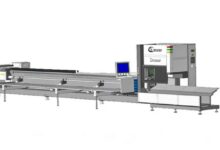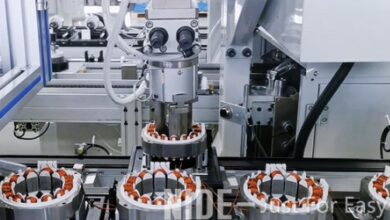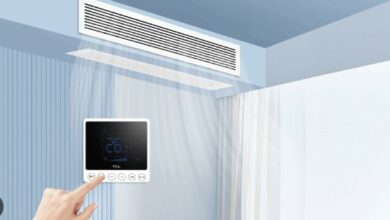The Latest Trends in HVAC Technology

The HVAC industry continually evolves, with new technologies emerging to enhance efficiency, comfort, and environmental sustainability. As homeowners and businesses seek to improve their indoor environments, understanding the latest trends in HVAC technology at Summers Plumbing Heating & Cooling of Fort Wayne can help them make informed decisions about their heating, ventilation, and air conditioning systems. We will explore the most recent advancements in HVAC technology and their potential benefits.
Recent advancements in HVAC technology
1. Smart Thermostats and Home Automation
One of the most significant trends in HVAC technology is the integration of smart thermostats and home automation systems. These devices allow users to control their HVAC systems remotely via smartphones or other internet-connected devices. Smart thermostats can learn users’ preferences and adjust temperatures automatically to maximize comfort and energy efficiency. They also provide detailed energy usage reports, helping homeowners identify ways to reduce consumption and save on utility bills. Integrating home automation systems enables seamless control of multiple devices, creating a more convenient and efficient living environment.
2. Variable Refrigerant Flow (VRF) Systems
Variable Refrigerant Flow (VRF) systems are gaining popularity due to their energy efficiency and flexibility. VRF systems use refrigerant as the cooling and heating medium, allowing for precise temperature control in different building zones. These systems can heat and cool different areas simultaneously, making them ideal for buildings with diverse heating and cooling needs. VRF systems are highly efficient because they adjust the refrigerant flow based on the specific demand in each zone, reducing energy waste. This technology benefits commercial buildings, hotels, and large residential properties, offering comfort and energy savings.
3. Ductless Mini-Split Systems
Ductless mini-split systems are becoming increasingly popular as an alternative to traditional ducted HVAC systems. These systems consist of an outdoor unit connected to one or more indoor units, providing targeted heating and cooling without requiring ductwork. Ductless mini-splits offer several advantages, including improved energy efficiency, easy installation, and enhanced indoor air quality. They are ideal for retrofitting older homes without existing ductwork, adding climate control to specific rooms, or creating independent temperature zones within a building. The flexibility and efficiency of ductless mini-split systems make them a growing trend in HVAC technology.
4. Energy Recovery Ventilation (ERV) Systems
Energy Recovery Ventilation (ERV) systems are designed to improve indoor air quality while enhancing energy efficiency. These systems exchange stale indoor air with fresh outdoor air, recovering energy from exhaust to pre-condition the incoming air. This process reduces the load on the HVAC system, leading to lower energy consumption and improved indoor air quality. ERV systems are particularly beneficial in tightly sealed, energy-efficient buildings with limited natural ventilation. By maintaining a constant supply of fresh air, ERV systems help reduce indoor pollutants and create a healthier living environment.
5. Geothermal Heating and Cooling
Geothermal heating and cooling systems are gaining traction as a sustainable and energy-efficient alternative to conventional HVAC systems. These systems use the stable temperatures of the earth to heat and cool buildings. A geothermal heat pump transfers heat between the building and the ground, providing efficient climate control. Geothermal systems are highly efficient, with lower operating costs than traditional ones. They also have a longer lifespan and a smaller environmental footprint. While the initial installation cost can be high, the long-term energy savings and environmental benefits make geothermal systems an attractive option for environmentally conscious homeowners and businesses.
6. Advanced Air Purification Technologies
With growing awareness of indoor air quality, advanced air purification technologies are becoming a crucial component of modern HVAC systems. Technologies such as UV-C light air purifiers, HEPA filters, and electrostatic precipitators are integrated into HVAC systems to remove airborne contaminants and pathogens. UV-C light air purifiers use ultraviolet light to kill bacteria and viruses, while HEPA filters capture particulate matter as small as 0.3 microns. Electrostatic precipitators use an electric charge to remove particles from the air. These advanced air purification technologies help create a healthier indoor environment by reducing allergens, pollutants, and pathogens.
7. IoT Integration and Predictive Maintenance
The Internet of Things (IoT) transforms HVAC technology by enabling predictive maintenance and real-time monitoring. IoT devices can collect data on system performance, energy usage, and environmental conditions, allowing for proactive maintenance and troubleshooting. Predictive maintenance uses data analytics and machine learning algorithms to predict when a system component will likely fail, enabling timely repairs and reducing downtime. This technology helps extend the lifespan of HVAC systems, improve efficiency, and reduce maintenance costs. IoT integration also allows homeowners and facility managers to monitor and control HVAC systems remotely, enhancing convenience and efficiency.
8. Solar-Powered HVAC Systems
Solar-powered HVAC systems are emerging as a sustainable and cost-effective solution for heating and cooling. These systems use solar panels to generate electricity, which powers the HVAC system. Solar-powered HVAC systems can significantly reduce energy bills and reliance on fossil fuels. Advances in solar technology and energy storage are making these systems more accessible and efficient. Integrating solar power with HVAC systems is an excellent way for homeowners and businesses to reduce their carbon footprint and promote renewable energy usage. Solar-powered HVAC systems are expected to become more prevalent as solar technology advances.
Read also: Home Remodelers: Transforming Spaces and Enhancing Value
Conclusion
The latest trends in HVAC technology reflect a growing emphasis on energy efficiency, sustainability, and improved indoor air quality. These advancements offer significant benefits for homeowners and businesses, from smart thermostats and VRF systems to geothermal heating and solar-powered solutions. By staying informed about these trends, individuals can make better decisions about their HVAC systems, ensuring optimal performance, comfort, and cost savings. Embracing these innovative technologies can lead to a more efficient and environmentally friendly future in heating, ventilation, and air conditioning.








